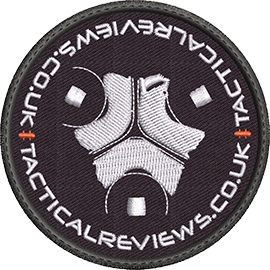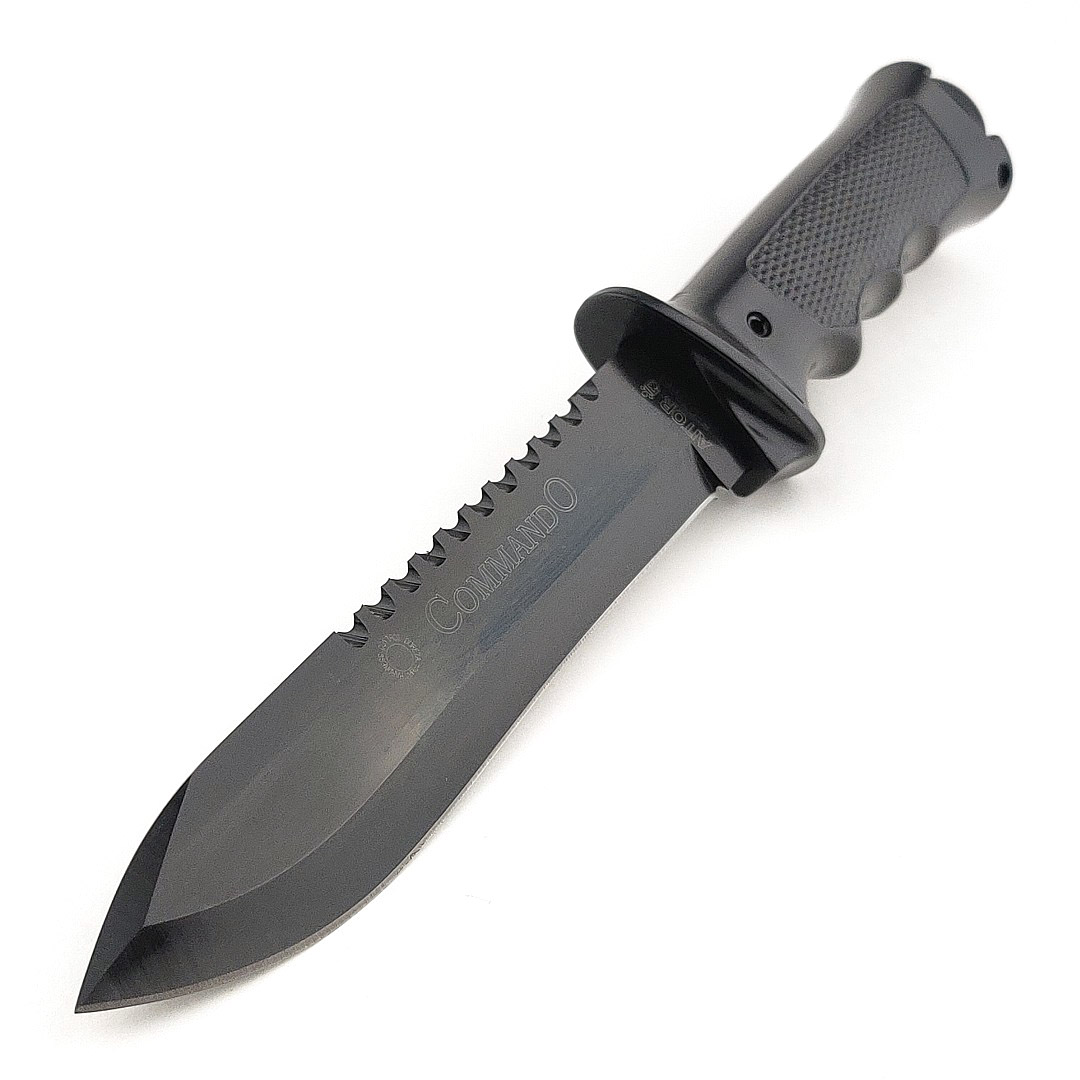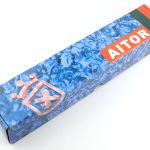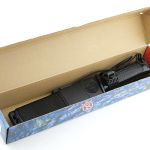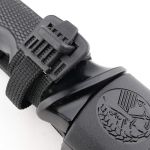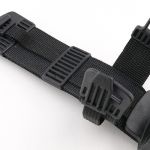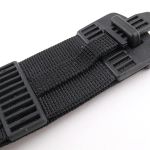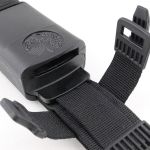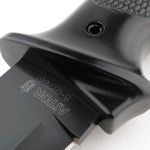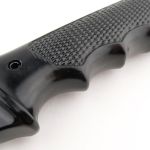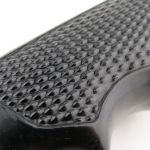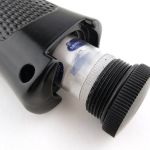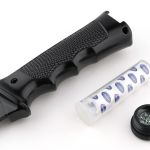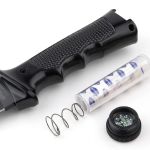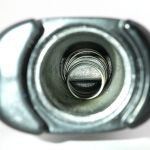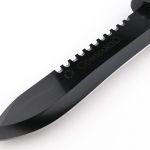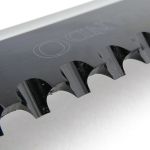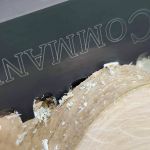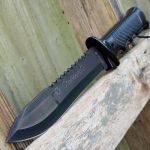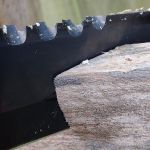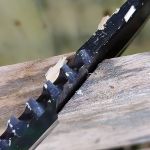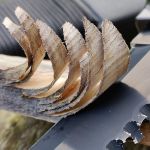The Legendary AITOR Commando – a Detailed Review of the Aitor Commando knife, taking a fresh look for 2025.
The Aitor Commando was originally developed together with the German manufacturer Mauser for the German Army. Designed to be a powerful, durable and reliable fixed blade knife. Ready for any situation, the robust blade is made of MoVa, and features a saw back. The lightweight and textured aluminium handle holds a comprehensive survival kit inside: Fishing set, sewing kit, tweezers, plasters and a scalpel blade.
This style of knife may have fallen out of favour for those demanding the most robust, full-tang blades made with super steels and other exotic materials, but there was a time when a well made hollow handle knife was king (and in fact even the poorly made copy that ended up giving them all a bad name). The reason they were so popular was because they are fun, and I have a feeling knife enthusiasts have forgotten about having fun with interesting designs that don’t need to be strong enough to survive being run over by a tank. I’m letting my hair down (all 3mm of it), shaking loose and letting myself enjoy picking up and using this classic design.
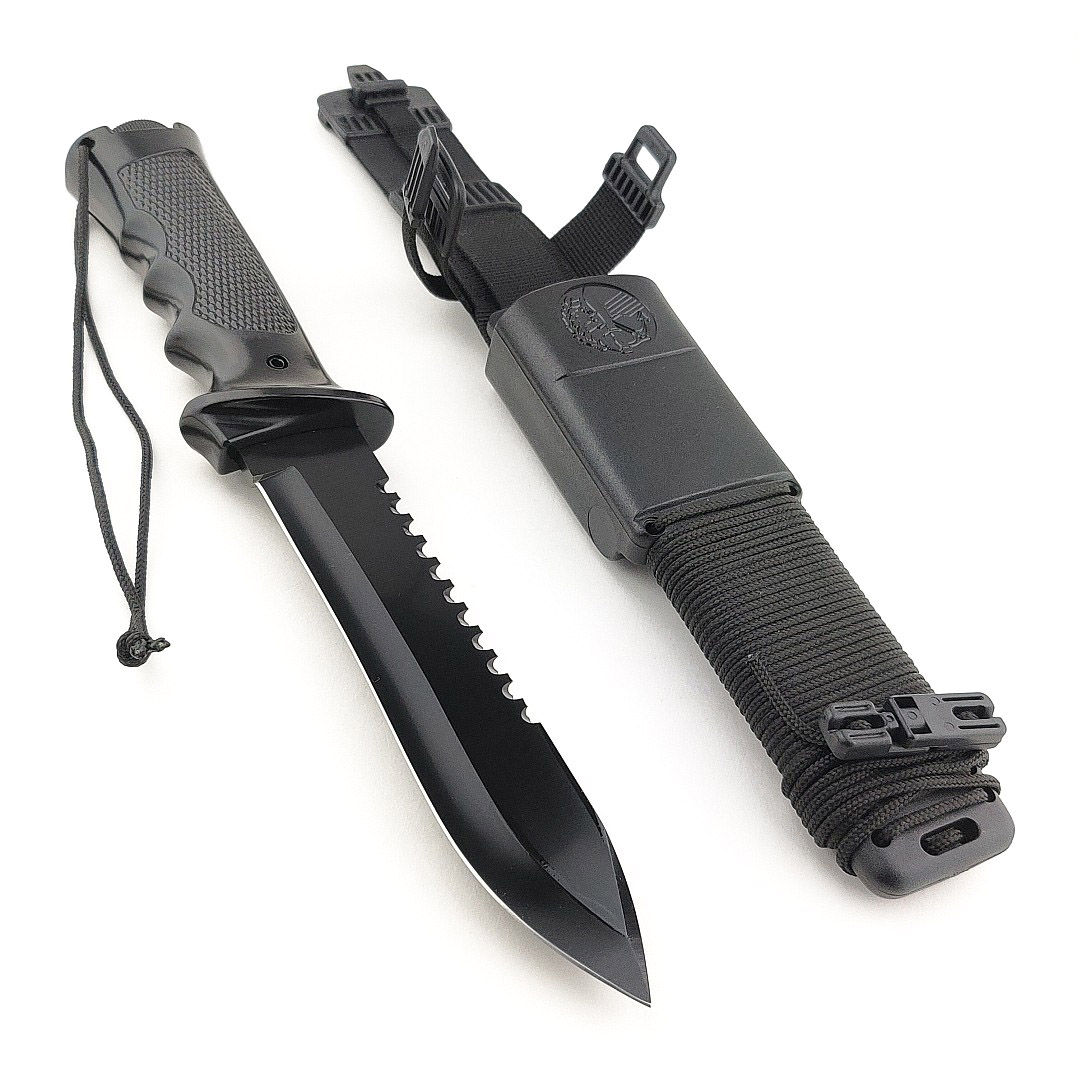
What’s in the box?:
Nice a simple, the knife is in the box. Nothing unnecessary, just a box to deliver the knife to you in.
A good look round the Commando’s Sheath – Things to look out for here are:
I’ve found the next two galleries in this Aitor Commando review have ended up quite a bit larger than usual, as there are many details to see. It is these details that all add to the overall interest and make the Commando a different experience.
At the base of the sheath there is a simple, adjustable, quick release leg strap cord, with the same cord used for the basic wrist lanyard. The knife retention strap uses a military style quick release pull tab closure. Pull the tab out, and the buckle opens freely. The same quick release pull-tab closure is used for the belt loop, allowing you to fit the sheath to your belt without undoing your belt.
Within the sheath is extra storage, (originally for small flares), allowing you to add whatever is most useful to you.
A length of cord wraps the lower section of the sheath, which covers up an integrated sharpening stone.
A good look round the Commando – Things to look out for here are:
Out of the box, the blackness of the blade finish is striking, making the whole package very ‘dark’. The Commando has presence, and overall the package is substantial. Unlike most traditional hollow handle knives, the Commando’s handle is a molded metal casting that allows for complex shaping, and includes three finger grooves, an integrated guard with thumb ramp, grip texturing panels and the fittings for the blade tang and the cap for the storage inside the handle. Recessed into the butt, and low profile, the screw-fit tail-cap can be gripped either side and unscrewed to access the handle storage compartment. With the tail-cap unscrewed, a survival capsule pops out and you find the tail-cap has a small compass in it. To both prevent rattle and to make access easy, a spring is fitted at the bottom of the handle compartment.
With a subtle weight-forward blade shape, spear point and saw back, the Commando has a purposeful appearance.
A good look round the Survival Capsule – Things to look out for here are:
The survival capsule…usually this is opened straight away and then quickly lost, or just never touched. Of course the idea is to pack in as many useful things as possible, which might help you or make some survival tasks easier. Aitor’s survival capsule contains two standard plasters, a sterile No. 23 scalpel blade, tweezers, fire-steel, two small safety pins, two sewing needles, some thread, plus a fishing kit consisting of three pre-tied hooks, a longer piece of line and three split shot. (Plus, don’t forget that they can sometimes oddly useful, the two staples that closed the bag containing the fishing kit.)
All these things are better to have and not need, than to need and not have.
The Blade and Handle – Detailed Measurements:
For full details of the tests and measurements carried out and an explanation of the results, see the page – Knife Technical Testing – How It’s Done.
The blade is made from MoVa steel. MoVa is identical in composition to the German blade steel 4116.

The Factory edge up close:
Followers of Tactical Reviews will know my views on factory edges, but to recap:
Anyone using a knife will need to sharpen it. That first factory edge is just like the first tank of fuel that a new car comes with (or first charge of the battery).
A good factory edge is a ‘nice to have’ but not a ‘make or break’ for a good knife, as you will be putting your own edge onto it soon enough.
The factory edge does however indicate the care a knife maker has put into the final finish.
It is for this reason Tactical Reviews measures factory edge sharpness and specifications, and includes this information in the detailed technical testing.
As a further look at the factory edge, this section has been added to include some high magnification photos of the factory edges.
Though just about serviceable, this factory edge was immediately re-profiled and a 17.5 DPS edge put on for testing. Also included in this gallery are close-ups of two of the saw teeth.
What is it like to use?
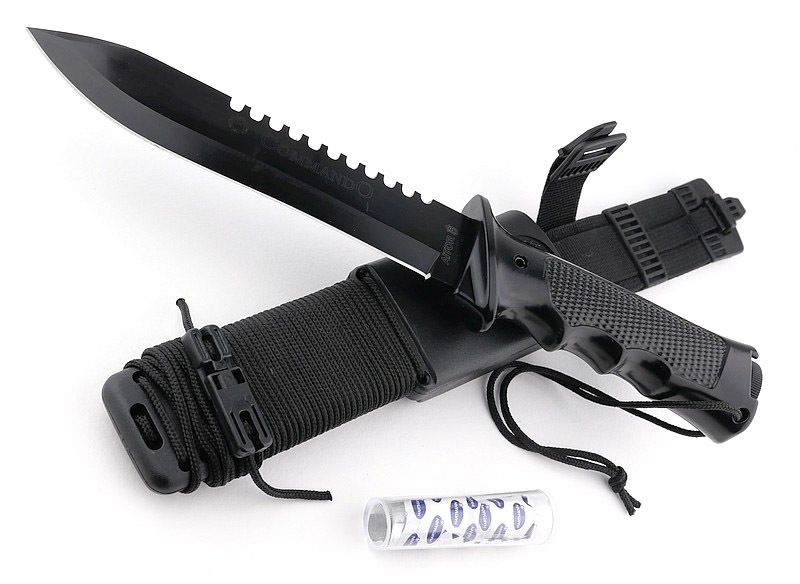
Straight away, picking up the Commando, its all metal construction gives it a feeling of solidity. It might indeed have a hollow handle, and it might have a short roll-pinned tang, and so may not be as strong as a similar sized full tang knife, but frankly who cares? Unlike many of the cheap clones (the clones giving the entire concept a bad name), the Aitor Commando is all-metal, so it is strong, certainly strong enough.
In the hand, the metal handle is cold (which is definitely noticeable in cold weather). The cast handle is however, very comfortable and ergonomic, at least in hands the size of mine. Smaller hands might find it less well fitting.
The molded finger grips help with stability, and the integrated thumb ramp in the guard works well. It helps that the handle is a generous length, as you do need to back-up along the handle to be able to place your thumb on the ramp.
The Saw-back – Anyone who has used a saw-back on a knife knows that these are really only a notching tool. You can’t get much downward pressure and the teeth are not set, so once you cut down enough to have the blade stock in the notch it becomes progressively harder to cut.
Here I’m showing a cut which has started to bind up on the blade, followed by showing the cut before and after tapping the saw and notch clean. The notch sides are nice and crisp, and this is useful for easily creating flat-sided notches, just not for full depth saw cuts.
Earlier I spoke of the deep black finish on the Commando’s blade. Following my initial sharpening, I use acetone to remove any stropping compound residue and generally clean up the blade. Of course this stripped off all the oil on the blade and shows the underlying matt black blade finish. Like any surface finish, oil always deepens the colour and once stripped off you see the true blade coating. You might also spot here where the forward part of the blade rubs more on the inside of the sheath where it is a tight finish, and has some rub marks in the blade finish. So don’t expect that deep deep black to last once you start using the Commando, but I actually prefer the ‘old black’ look.

Before testing the Commando, I wasn’t happy with the factory edge, so re-profiled to 17.5 DPS and stropped. The factory edge would not cleanly cut paper and card, but now I have a ‘telephone directory’ (or TV guide) slicer, which requires a saving sharp edge to cut without tearing.
Aitor’s Commando is a short tang hollow handle knife – can it chop? I gave it no quarter, and went for it chopping a tough pallet. Being a hollow-grind the depth of cut on each strike is slightly limited, but it still powered through without any concern. With a metal handle and metal roll pin, and a steel that has been left at the tougher end of hardening, the overall construction means this chopping was a walk in the park for the Commando. The new edge showing clean cuts all the way through.
It may be relatively weighty due to the all metal construction, but still lacks slightly on impact weight. As another test, I’ve switched to batoning the blade into the same type of wood, and am showing how once the blade gets past the shoulder of the hollow grind it stops making much progress. Viewed from above you can see how the blade is forcing apart the board and getting wedged in.
Not strictly feather-sticking, but making a tight series of cuts and the Commando outperformed my expectations. The large handle giving plenty of grip and the blade is long enough to allow it to be rested onto a cutting surface for extra control, and the Commando was slicing though this seasoned wood almost too easily.
At the end of testing the ‘telephone directory’ result was the same without any touch up or stropping, which was also beyond expectations.
Can you spot the deliberate mistake when getting my bearings? (The compass is pointing at the knife blade, not to the north.)
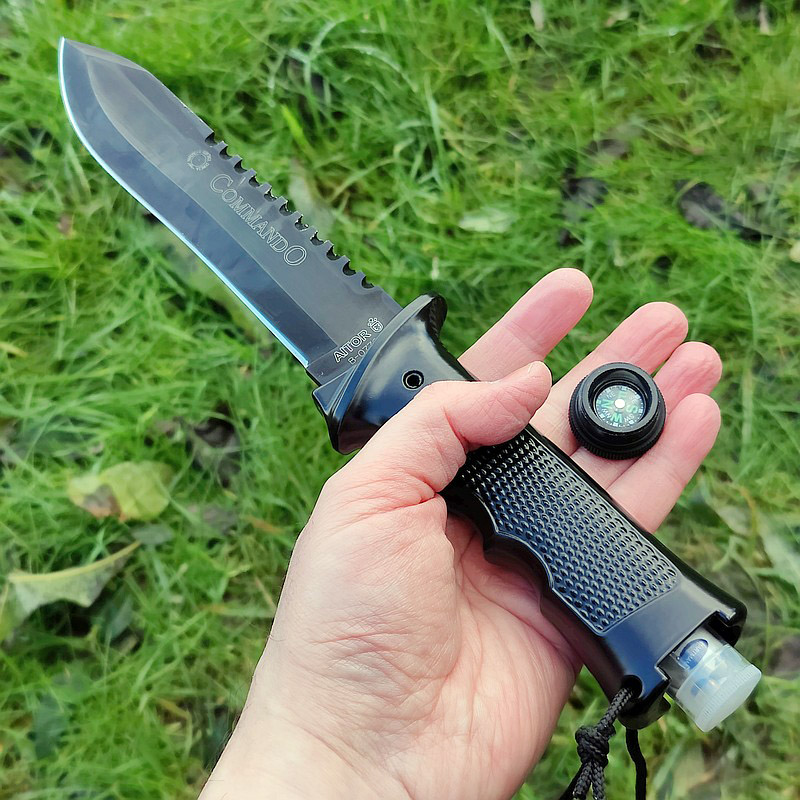
Times change, technology moves forward, and designs become outdated, preferences change, and for many this style of knife is a thing of the past. Hollow handle knives gained a poor reputation due to the vast number of cheap, horrifically-badly made hollow handle knives that quickly broke or bent, wouldn’t hold and edge and had dangerous sheaths. But this is not true of Aitor; The Aitor Commando quickly proves it is worthy of a place in your collection, a collection that are hopefully all ‘users’.
Aitor, established in 1939, have vast experience making hollow handle knives that are strong, hold an edge and make this style of knife worth adding into your lineup to give you something different and interesting to use, and the Commando happens to be a true classic.
Review Summary
The views expressed in this summary table are from the point of view of the reviewer’s personal use. I am not a member of the armed forces and cannot comment on its use beyond a cutting tool or field/hunting knife.
Something that might be a ‘pro’ for one user can be a ‘con’ for another, so the comments are categorised based on my requirements. You should consider all points and if they could be beneficial to you.
_______________________________________________
What doesn’t work so well for me
_______________________________________________
By current standards it is on the heavy side.
No visible drainage holes in the sheath.
Tight fit in the sheath (could have issues with a dirty blade).
Saw back cuts into the sheath (true of any saw back).
_______________________________________________
Things I like
_______________________________________________
Fun to use.
All metal construction.
Large ergonomic handle.
Generous storage in knife handle and sheath.
Survival capsule included in handle.
Integrated (backup) sharpener.
Includes emergency cord neatly wrapped on the sheath.
Pull-tab quick-release closures for retention strap and belt loop.
Saw-back works well for notching.
Takes and holds an edge well enough despite low hardness.
Lower hardness makes field maintenance easier.
Review Videos
Starting with a short format sixty second review:
Onto a full video review covering many more details:

Discussing the Review:
Something new – will it work? A Tactical Reviews Subreddit.
TacticalReviewsChat on Reddit
Please visit there and start/join the conversation.
